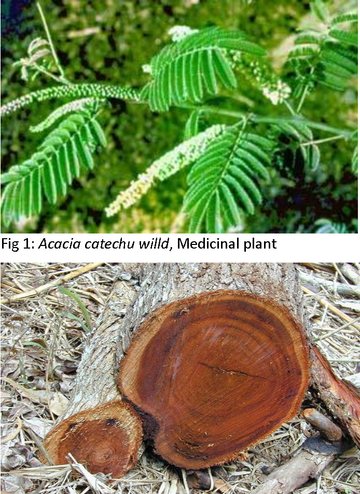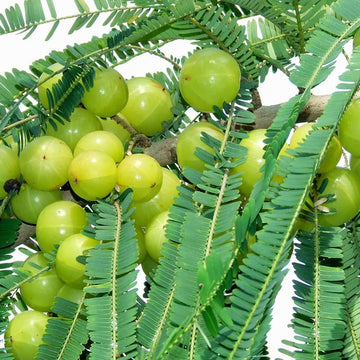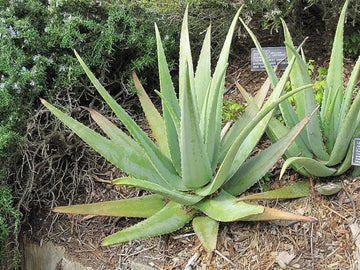ENGLISH NAME:- Black Catechu. Hindi- Khair, Kattha
SYNONYMS
Sanskrit : G¡yatri
Assamese : Kharira, Khara, Khayar
Bengali : Khera, Khayera
English : Black catechu, Cutch tree
Gujrati : Khair, Kathe, Kher
Hindi : Khair
Kannada : Kaggali, Kaggalinara, Kachinamara, Koggigida
Kashmiri : Kath
Malayalam : Karingali
Marathi : Khaira, Khair
Oriya : Khaira
Punjabi : Khair
Tamil : Karungali, Karungkali
Telugu : Chandra, Kaviri
Urdu : Chanbe Kaath
BOTANICAL NAME - Acacia catechu, Senegalia catechu
FAMILY - Leguminosae
PARTS-USED:-Pith region, Bark, Cendensed extract of heart wased.
DESCRIPTION - A medium sized spiny tree, spines are modification of Stipules, leaves 30-40 pairs pinnal 10-20 pairs; pinnules, flowers on spikes, small creamish white, pod thin brown shining.
Its tree is of medium strength. bark blackish brown.
It is 3 inches thick, leaves long and thin and is brown in color from inside. Branches-thin; In place of sub-leaflets, they have paired, crooked thorns. Leaves - 10-15 cm. m. Are long. There are 40-80 leaves on each side and 60-100, sessile, hairy, linear, 1-2 inches long leaves on each side. There is one gland below and one above on the main petiole. Flowers are small, white or pale yellow, 2- 3 inches long, grouped in axial panicles. The endosperm is densely hairy, chlorotic, and is twice or three times the size of the endosperm. Stamens are found in five clusters at the base of the sepal. Pod - 2-5 inches long, thin, grey, shiny, often irregularly shrunk, the front is round or oblong, which contains 5-8 seeds. in the rain Flowers and fruits come in the hemant.
a) Macroscopic
Heart-wood, light red, turning brownish-red to nearly black with age, attached
with whitish sapwood, fracture hard, taste, astringent.
b) Microscopic
Transverse section of heart-wood shows, numerous, uni-to bi-seriate medullary rays, vessels occurring isolated or in small groups of two to four, xylem fibres with narrow lumen occupying major portion of wood, xylem parenchyma usually fibres with 14-28 segments, each having one prismatic crystal of calcium oxalate, a few tracheids with scalariform thickening, some of cells, including vessels, filled with brown content, prismatic crystals of calcium oxalate present in a number of cells throughout the wood.
Powder- Brown coloured, under microscope shows a number of xylem fibres, vessels, crystal fibres, prismatic crystals of calcium oxalate.
Place of Origin - It occurs in the dry atmosphere in the Himalayan region from Punjab to Sikkim up to a height of 5 thousand feet.
CHEMICAL CONSTITUENTS - Inner wood contains catechin and catechutannicacid, Catechutannic acid contain about 50% Tannin.
ACTIONS - Anti-inflammatory, Wound healing, Astringent, Cooling, Digestive, Bloodpurifier.
USED-IN - Skin diseases, Dental disorder, Dry cough, Stomatis, Anaemia, Leprosy, Bronchitis, Pruritus, Diarrhoea, Polyuria.
USES - In case of cough (Kaas) – In case of dry cough caused by Vata at night, add two grams of Khadir essence in a cup of curd water and give it in the morning and evening. Make powder of four parts of Khadir bark, two parts of Baheda bark and one part of cloves, one gram each three times a day and licking it with honey provides relief in dry cough.
In hoarseness - Mixing catechu in sesame oil, soaking a small clean cloth in it and keeping it in the mouth helps in opening the throat.
In case of leucorrhoea, mix Khadir bark and its component Amla and boil it well and consume it by adding one spoon of Amla powder in it in the morning and evening.




